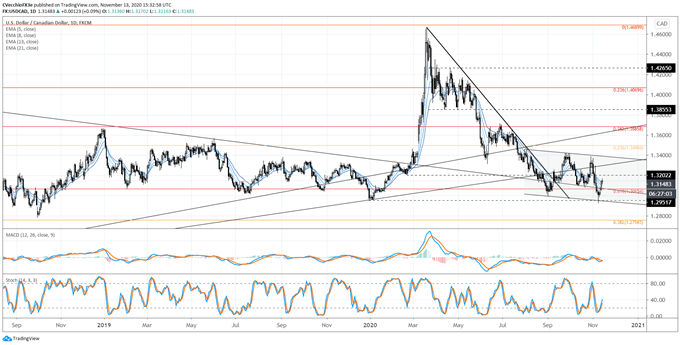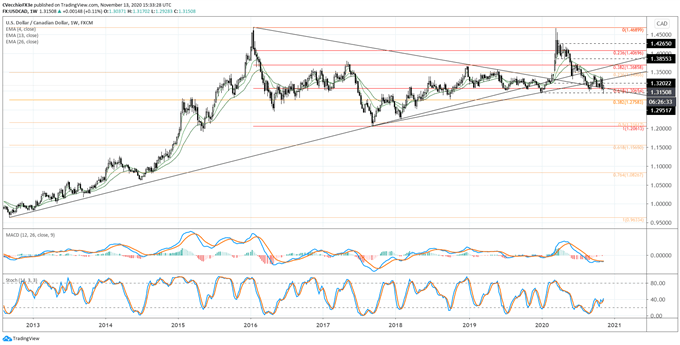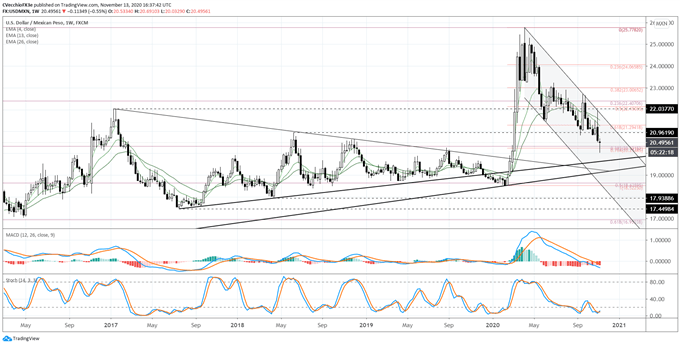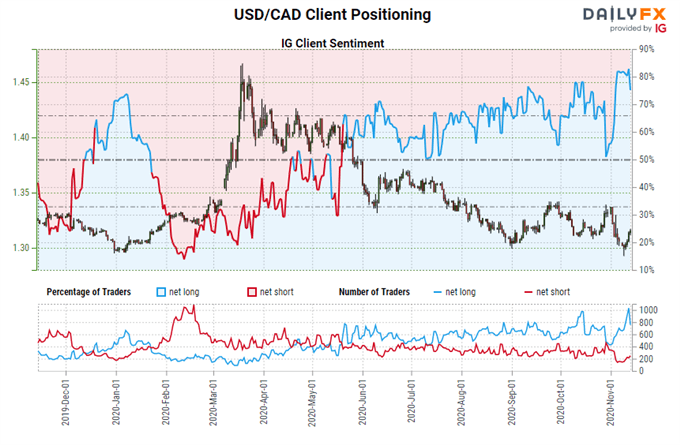Winners In FX Markets After US Presidential Election: CAD & MXN
BIDEN WIN NORMALIZES US TRADE POLICY
Democrat Joe Biden has won the US presidency. While many of his policies and plans may not come to fruition thanks to a divided Congress, one area that he can directly impact, regardless of the composition of Congress, is trade.
Trade wars were a hallmark of the Trump era. While a president-elect Joe Biden may not deviate that far on trade policy when it comes to China beyond ending tariffs, there is a reasonable basis of expectation that the Biden administration will seek to normalize trade policy with key allies.
Read more: Will Trade Wars Persist After the US Election?
US’ TRADING PARTNERS HAVE BEEN PRESSURED
Among the countries at the top of this list include Canada and Mexico, the United States’ immediate geographic neighbors. The combination of higher tariffs implemented by the Trump administration and the coronavirus pandemic has hurt the Canadian and Mexican economies significantly. That the United States is in the midst of its worst stretch of the coronavirus pandemic is hobbling Canadian and Mexican economies from fully recovering.
The reliance of both of these economies on the United States can’t be dismissed; the United States is both countries’ largest trading partner. More than 80% of Mexico’s exports going to the United States and 70% of Canada’s exports going to the United States. Approximately 30% of Mexico’s GDP is derived from economic activities involving the United States, while that number is near 20% for Canada.
RECENT DEVELOPMENTS BULLISH CAD, BULLISH MXN
Alongside the news that COVID-19 vaccines are reaching promising milestones in their development, optimism has been abounding and growth-linked and riskier currencies have been outperforming. Hope that the United States will soon be able to wrangle control of the coronavirus pandemic through widespread vaccination has investors ignoring otherwise alarming COVID-19 outbreak data.
The developments over the past week have been fundamentally long-term bullish for the Canadian Dollar and the Mexican Peso. A Biden win means relaxed trade tensions in the form of reduced tariffs, a more concerted US federal effort to bring the coronavirus pandemic under control, and more US fiscal stimulus in the near-term that will help re-invigorate the US economy (even if the fiscal stimulus is smaller due to no blue wave).
These developments and ensuing price action suggest that the Canadian Dollar and Mexican Peso stand to be winners under a Biden administration, regardless of the composition of Congress. Already, we’ve seen USD/MXN and USD/CAD rates fall since US election day on Tuesday, November 3. Recent technical developments may cater to more weakness in the pairs ahead.
USD/CAD RATE TECHNICAL ANALYSIS: DAILY CHART (OCTOBER 2018 TO NOVEMBER 2020) (CHART 1)
(Click on image to enlarge)

Despite trading higher in recent days, USD/CAD rates continue to flirt with a break below the trendline from the 2016 and 2019 highs, which has coincided in recent days with the 61.8% Fibonacci retracement of the 2016 high/2017 low range at 1.3065. While the rebound from support has seen USD/CAD rates trade higher through their daily 5, 8-, 13-, and 21-EMA envelope, the moving averages are still in bearish sequential order. Daily MACD is holding below its signal line, while Slow Stochastics are just advancing from oversold territory.
In context of the move lower from the March 2020 high, it appears that USD/CAD rates are consolidating in a bear flag continuation pattern that would ultimately produce new yearly lows for the pair in the remaining six+ weeks of 2020.
USD/CAD RATE TECHNICAL ANALYSIS: WEEKLY CHART (SEPTEMBER 2012 TO NOVEMBER 2020) (CHART 2)
(Click on image to enlarge)

Big picture: there may no longer be a longer-term upside bias in USD/CAD rates as this narrative is under threat given the breakdown through the rising uptrend from the September 2012 and September 2016 lows. The longer-term view remains a bearish double top. Failure below the trendline from the 2016 and 2019 highs and the 61.8% Fibonacci retracement of the 2016 high/2017 low range would increase confidence in a longer-term bearish view for USD/CAD rates.
USD/MXN RATE TECHNICAL ANALYSIS: DAILY CHART (FEBRUARY 2019 TO NOVEMBER 2020) (CHART 3)
(Click on image to enlarge)

USD/MXN rates have continued to grind lower, holding within the downtrend going back to the coronavirus pandemic high in March 2020. On the daily chart, November has produced fresh lows dating back to March, although support has recently been found in the area spanning 20.0000/20.3215, which includes two key Fibonacci retracements spanning the 2020 high/low range (light red) and the trailing 10-year high/low range (dark red).
Bearish momentum has started to ease in the near-term given the rally from support. But USD/MXN rates are still below their daily 5-, 8-, 13-, and 21-EMA, which is in bearish sequential order. Daily MACD is still trending lower below its signal line, while Slow Stochastics’ rise out of oversold territory has begun to slow. It appears that the path of least resistance is to the downside for USD/MXN rates.
USD/MXN RATE TECHNICAL ANALYSIS: WEEKLY CHART (APRIL 2016 TO NOVEMBER 2020) (CHART 4)
(Click on image to enlarge)

The continued pullback from the March 2020 high suggests that the triangle breakout experienced in Q1’20 may ultimately yield to a return to the triangle. To this end, momentum on the weekly timeframe remains firmly bearish, more so than on the daily timeframe. USD/MXN rates are below their weekly 4-, 13-, and 26-EMA envelope. Weekly MACD is trending lower below its signal line, while Slow Stochastics are nestled in oversold territory. A pullback towards symmetrical triangle support near 19.7300 over the coming weeks cannot be ruled out, nor can a deeper retracement towards 19.3000.
TRACKING CAD & MXN POSITIONING
The close proximity of both countries, given their trade relationship with the United States, also means that their currencies tend to trade in a similar fashion as well. To this end, the 20-day correlation between USD/CAD and USD/MXN rates is currently +0.81 and the 50-day correlation is +0.84.
IG CLIENT SENTIMENT INDEX: USD/CAD RATE FORECAST (NOVEMBER 13, 2020) (CHART 5)
(Click on image to enlarge)

USD/CAD: Retail trader data shows 69.87% of traders are net-long with the ratio of traders long to short at 2.32 to 1. The number of traders net-long is 23.62% lower than yesterday and 2.62% higher from last week, while the number of traders net-short is 7.04% higher than yesterday and 40.09% higher from last week.
We typically take a contrarian view to crowd sentiment, and the fact traders are net-long suggests USD/CAD prices may continue to fall.
Yet traders are less net-long than yesterday and compared with last week. Recent changes in sentiment warn that the current USD/CAD price trend may soon reverse higher despite the fact traders remain net-long.



